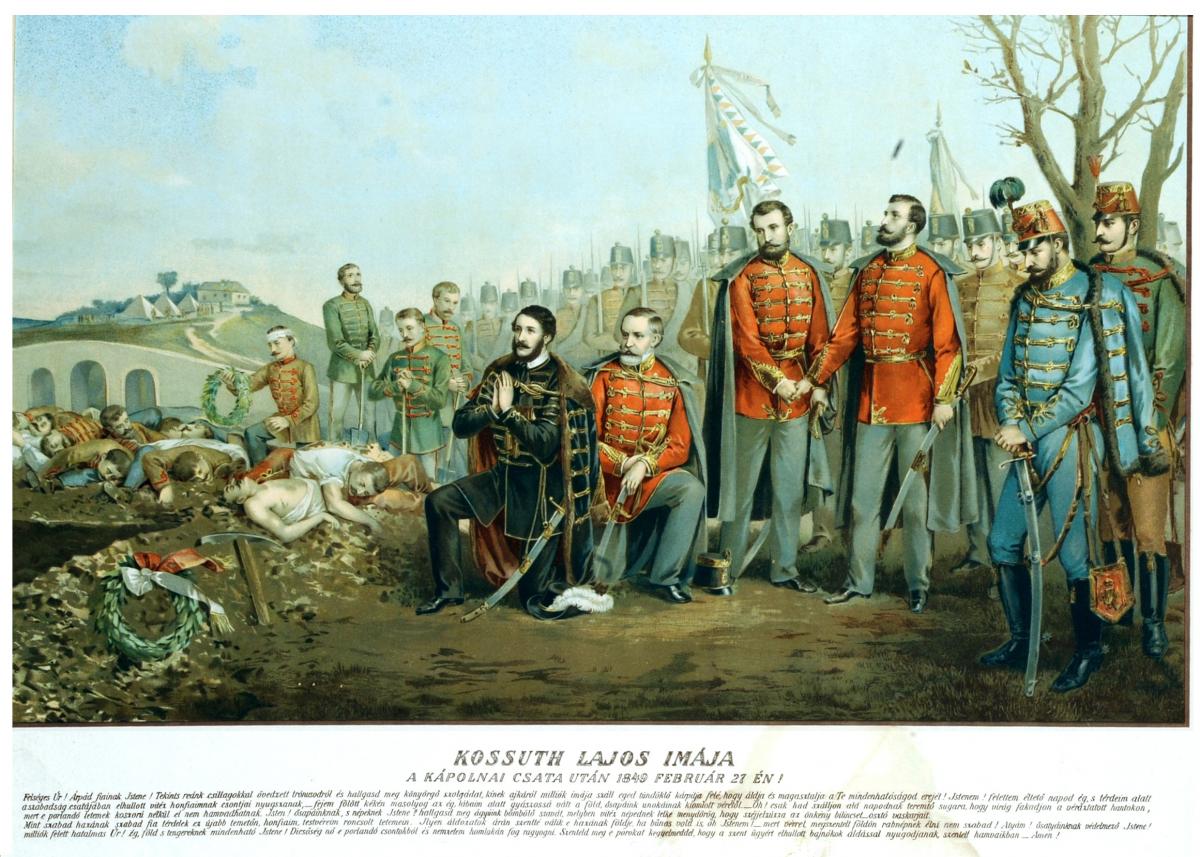
Not a jot from 48! The Memory of the Revolution and War of Independence of 1848-1849 – exhibition
The Collection of Posters and Small Prints set up an exhibition to celebrate the 170th anniversary of the outbreak of the Revolution and War of Independence of 1848-1849.
What does 1848–1849 mean in the national heritage? It reminds us of freedom, revolutionary spirit and those who had sacrificed their lives for the country. In the spirit of “Homeland and Progress”, the other slogan of the efforts of 1848 was civil transformation that had been realized by accepting the so-called April Laws. The slogan chosen for the title of our exhibition refers to this: Not a jot from 48! In the era of the Compromise, it also served as a party slogan.
 Out of the documents stored in the Collection of Posters and Small Prints, the collection of 1848-49 has a prominent role. The collection includes approximately 1,600 period text documents, mainly posters featuring text, leaflets and pamphlets, which are large-size, folio, quarto and octavo. In addition to Hungarian documents, there are quite a few documents in German, and a few in Italian and Slovak.
Out of the documents stored in the Collection of Posters and Small Prints, the collection of 1848-49 has a prominent role. The collection includes approximately 1,600 period text documents, mainly posters featuring text, leaflets and pamphlets, which are large-size, folio, quarto and octavo. In addition to Hungarian documents, there are quite a few documents in German, and a few in Italian and Slovak.
This document section includes, among others, 12 pont (12 Points. What Does the Hungarian Nation Wish for?) and period press copy of Nemzeti dal (National Song), royal rescript on the subject of setting up an independent responsible Hungarian ministry, and the text of Chairman of the National Defense Committee Lajos Kossuth’s prayer said over the grave of 500 aircraftmen, who had died in the Battle of Kápolna in February 1849.
The exhibition, presenting the events of 1848–49 mainly via text documents of the collection of 1848-49, has been made more colorful by engravings, lithographs, images of albums and postcards.
In addition to presenting prominent figures and decisive events of the Revolution and War of Independence, we can get an answer to the question how the participants of the uprising could get from Pest to Buda on March 15, 1848, when Chain Bridge had not even been built. We can learn when and in which building the first people's parliamentary assembly gathered, and what the ceremonial was like. We can also learn about the dress code of the establishing National Guard, the rules and regulations of the Hungarian National Army, the mazes of lawmaking, and the dilemmas of the Hungarian government and the National Defense Committee.
Period leaflets and text posters were always related to some kind of actualities, they were rather short, and had been widely distributed.
In addition to images, the current exhibition and its catalog, edited by curator of the exhibition Dr. Kornélia Vas-Tóth, include text materials, too. The bulk of these materials give an insight into the collection of 1848-49 kept in the Collection of Posters and Small Prints. A video on the presented items of the exhibition was edited by the curator.
 The exhibition will be opened at 10 a.m. on March 5, 2018. Facebook event
The exhibition will be opened at 10 a.m. on March 5, 2018. Facebook event
Guests will be greeted by Ágnes Kopcsay, Department Head of the Collection of Posters and Small Prints. The exhibition will be presented and a guided tour will be held by curator of the exhibition Dr. Kornélia Vas-Tóth.
The exhibition will be open on Floor 5 of NSZL, in the corridor adjacent to the Collection of Posters and Small Prints, during the opening hours of the Library. Last entry is permitted one hour prior to closure. Visitors who are not registered readers of National Széchényi Library can visit our temporary chamber exhibitions for a flat fee of HUF 400.
Poster of the exhibition (in Hungarian)




